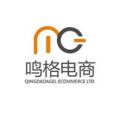What is the difference between group buying and e-commerce?
团购带货和电商带货有以下几点不同:
1. 模式不同:团购带货通常由个人或者团队组织,以发起人的信任度和组织力为依托,通过社交媒体或短视频等渠道宣传,拉近顾客与产品的距离,形成团购,达到销售的目的;而电商带货则由互联网电商平台参与,以平台的品牌影响力为基础,较少依靠人员的信任和组织能力,通过平台的线上促销和营销手段,促进消费者对商品的购买。
2. 商品价格不同:团购带货的商品价格相对较低,因为团购可以享受优惠价格;而电商带货的商品价格相对较高
Professional answer
Group buying and e-commerce have the following differences:
1. Different models: Group buying is usually organized by individuals or teams, relying on the trust and organizational strength of the initiator, and promoting through channels such as social media or short videos to bring customers closer to the product, forming group buying, and achieving the purpose of sales; while e-commerce is participated by Internet e-commerce platforms, based on the brand influence of the platform, less dependent on the trust and organizational ability of personnel, and promoting consumers to purchase goods through the platform's online promotion and marketing methods.
2. Different product prices: The price of goods sold through group buying is relatively low, because group buying can enjoy preferential prices; while the price of goods sold through e-commerce is relatively high
The purchasing methods are different. E-commerce mainly relies on active search. Faced with a wide variety of products, consumers have many choices, but they also lack references and suggestions. Group purchases are directly consulted and purchased in WeChat groups; relatively speaking, the interactivity and timely feedback are strong, and the purchasing method is relatively simple.
The logistics costs are different: E-commerce mainly distributes and delivers goods through express logistics after the order is placed. The delivery and fulfillment costs for each customer unit price are actually relatively high. E-commerce, due to a group pre-sale, can gather a large order and then ship it to a community address, which invisibly reduces logistics costs. This is a clear advantage.
Similar Q&A
recommend How to use Starbucks Douyin group purchase coupons?
E-c News Continuously pushing e-commerce knowledge to you








Latest Q&A More
-
Do I need a trademark to open a franchise store on Pinduoduo to sell books?
#Pinduoduo#
-
How to withdraw from a Pinduoduo store
#Pinduoduo#
-
How to withdraw from Pinduoduo merchants
#Pinduoduo#
-
How to pay fees when closing a Pinduoduo store
#Pinduoduo#
-
How to withdraw from Pinduoduo
#Pinduoduo#
-
Which store on Pinduoduo is authentic?
#Pinduoduo#
-
Which stores on Pinduoduo can buy genuine products?
#Pinduoduo#
-
How to check the store under Pinduoduo
#Pinduoduo#
-
How to receive Pinduoduo online game products
#Pinduoduo#
-
How to sell the electronic version on Pinduoduo
#Pinduoduo#
E-c News 2025-12-26 15:27:28

- African netizens use China Africa cross-border e-commerce platform for online shopping
- how is the new seller of cross-border e-commerce doing?
- how can cross-border e-commerce Amazon sell on Amazon platform without goods?
- Amazon store opening process and cost analysis!
- Amazon plans to expand its pharmacy business on a large scale and will add same day delivery service

